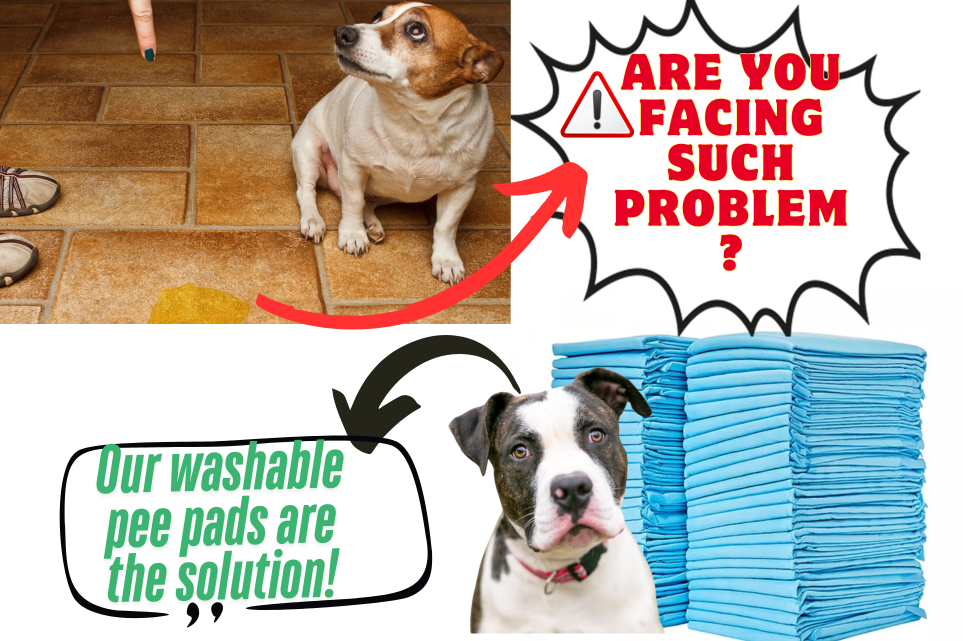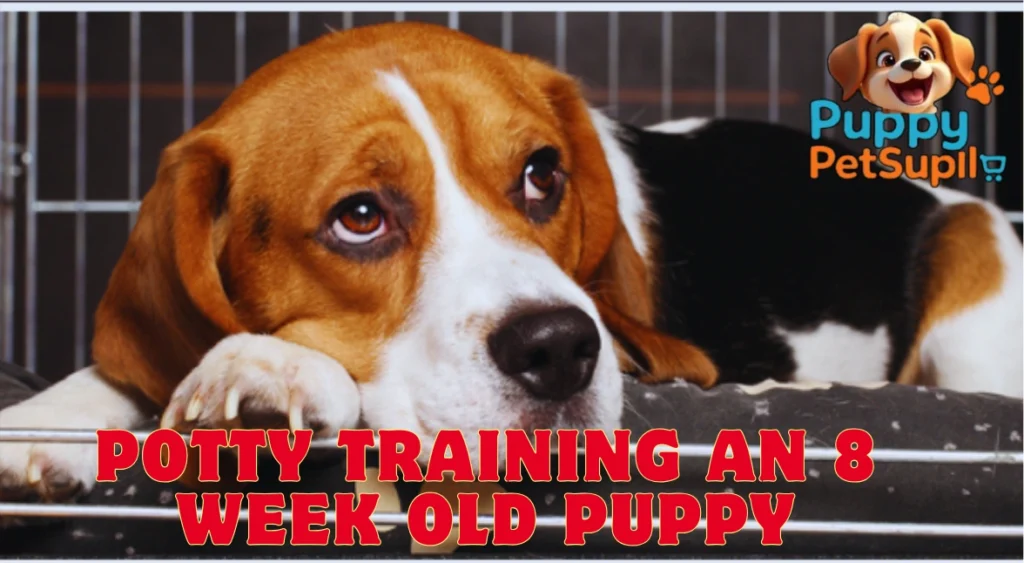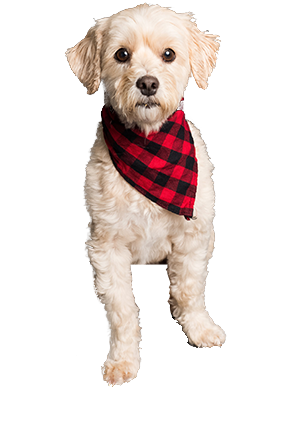Did you know starting potty training early can cut down on accidents? It makes the process easier for you and your pet. Training a young puppy needs patience, consistency, and the right methods.
Using the right methods, like pad training, can be very effective. This guide will show you how to potty train your puppy successfully.
Key Takeaways
- Understand the importance of early potty training.
- Learn effective pad training techniques.
- Discover how to create a routine that works for you and your puppy.
- Find out how to minimize accidents and reinforce good behavior.
- Get tips on maintaining consistency and patience throughout the training process.
Understanding Your Potty Training an 8 Week Old Puppy Bathroom Needs
It’s key to know your 8-week-old puppy’s bathroom needs for good potty training. At this age, puppies are still growing and can’t control their bladder and bowels well.
Physiological Development at 8 Weeks
At 8 weeks, puppies are in a key development stage. They can’t hold their urine for long and have a natural urge to go after doing certain things.
Bladder Control Limitations
Puppies at this age can’t hold their urine for long. They need to go often.
Natural Instincts for Elimination
Puppies naturally try to avoid soiling where they sleep. This can help with potty training by setting up a special potty area.
How Often Puppies Need to Eliminate
Puppies need to go often, usually after waking, eating, and playing.
Why Pad Training Might Be Right for Your Puppy
Many new puppy owners find pad training helpful for starting potty training. It’s great for young puppies who are still learning to control their bladder and bowels.
Benefits of Pad Training for Young Puppies
Pad training has many benefits for young puppies. It gives a special place for your puppy to go, making cleaning up easier. It also lowers the chance of accidents in the house.
- Apartment Living Solutions: Pad training is perfect for those living in apartments or with little outdoor space. It means you don’t have to take your puppy out as often, which is great for city living.
- Weather and Safety Considerations: Bad weather or safety issues, like busy streets or extreme temperatures, can make going outside hard. Pad training is a safe and cozy option.
Situations Where Pad Training Works Best
Pad training works well in specific situations. Knowing these can help you decide if it’s right for you and your puppy.
- Work Schedule Accommodations: If your busy schedule stops you from taking your puppy out often, pad training can be a big help.
- Health and Vaccination Concerns: Young puppies might not be fully vaccinated, making outdoor risks high. Pad training keeps them safer.
Thinking about these points can help you decide if pad training is best for your puppy’s potty training.
Essential Supplies for 8 Week Old Puppy Pad Training
To pad train your 8-week-old puppy, you need the right stuff. The right gear makes training easier and keeps accidents and stress down.
Types of Puppy Pads Available
There are many puppy pads out there, each for different needs. Knowing your options helps pick the best one for your puppy.
Disposable vs. Reusable Options
Disposable pads are easy and clean, making them a top pick. Reusable pads are good for the planet and save money over time. Think about what matters most to you.
Scented Pads and Attractants
Some pads have scents or attractants to draw your puppy in. These can be super helpful when starting out.
Creating a Designated Potty Area
Having a special potty area is key for pad training. It’s more than just putting a pad down.
Artificial Grass and Other Alternatives
Some owners prefer artificial grass or other non-traditional pads. These can help your puppy learn the difference between potty and play areas.
Enzymatic Cleaners for Accidents
Accidents will happen, and enzymatic cleaners are key for cleaning up. They remove stains and smells, keeping your puppy from going back to the same spot.
Playpens and Gates for Space Management
Playpens and gates help control your puppy’s space. They keep them out of areas you don’t want them in, especially when you’re just starting out.
With the right supplies and knowing how to use them, you’re set to pad train your 8-week-old puppy successfully.
Setting Up Your Home for Successful Pad Training
Potty training an 8 Week old puppy needs a well-prepared home. It’s not just about buying puppy pads. You must set up your home to help your puppy learn to use the pads correctly and safely.
Strategic Pad Placement Throughout Your Home
Where you place puppy pads is very important. Think about how far your puppy’s common areas are from the pad. Also, decide if you need multiple pads or just one spot.
Distance Considerations for Young Puppies
Young puppies can’t hold their urine for long because their bladders are small. So, place pads where your puppy can easily get to them. Placing pads too far away can lead to accidents.
Multiple Pad Locations vs. Single Location
Using more than one pad location can be helpful, especially in big homes or at the start of training. But, it’s also important to avoid confusion. A consistent routine and clear guidance can help avoid this problem.
Puppy-Proofing and Limiting Access to Other Areas
It’s crucial to puppy-proof your home for pad training. This means limiting your puppy’s access to areas you don’t want them in. This reduces the chance of accidents and damage.
Crate Training as a Complement to Pad Training
Crate training is a great tool to use with pad training. It helps control where your puppy goes and what they can access. Crate training also helps with housetraining by giving your puppy a defined space.
Creating Safe Zones with Consistent Pad Access
Creating safe zones with consistent access to puppy pads helps your puppy learn where to go potty.
“Consistency is key when it comes to pad training. Make sure your puppy always has access to the pads and that they are always in the same place.”
Step-by-Step 8 Week Old Puppy Pad Training Process
Training your puppy to use pads is a step-by-step journey. It’s all about their age and how they grow. You’ll need to introduce them to the pads, keep a schedule, use positive methods, and handle accidents well.
First Exposure Techniques
Put your puppy on the pad gently. Let them get used to the feel and smell. Do this often until they connect the pad with going to the bathroom.
Using Scent to Encourage Pad Use
Puppies like scents. Use a pad with a scent they like or put a soiled pad on top. This will help them want to use it.
Creating a Consistent Schedule
Having a routine is key for training. Take your puppy to the pad at the same times each day. This includes after waking up, meals, and play.
Key Times to Take Puppy to Pad
Take your puppy to the pad right after waking, meals, and play. Being consistent helps them learn good habits.
Feeding Schedule’s Impact on Potty Timing
A regular feeding schedule helps your puppy’s bowel movements. It makes it easier to know when they need to go.
Verbal Cues and Commands
Use a consistent cue, like “go potty,” when you take them to the pad. This helps them learn to associate the command with the action.
Handling Accidents Properly
Accidents will happen. But, it’s important to handle them right. Don’t punish your puppy for accidents. This can make them feel bad and slow down training.

No-Punishment Approach
Instead of punishing, clean up accidents quietly and well. This removes scents that might attract your puppy to the same spot again.
Proper Cleanup to Prevent Repeat Accidents
Use a pet-safe cleaner to clean up accidents. This prevents your puppy from going there again.
How to Train Dog to Pee on Pad at Night
To train your dog to pee on a pad at night, you need a mix of scheduling, watching, and positive feedback. This takes patience and regular effort. But, with the right steps, your dog can learn to go to the pad at night.
Nighttime Pad Training Strategies
Good nighttime pad training starts with setting up your home and dog for success. This means choosing the right spot for your dog to sleep and making the pad easy to find and use.
Bedroom Setup Options
Putting your dog’s pad in your bedroom is a smart move. It lets you watch your dog more easily and respond quickly to their needs. This is especially good for young puppies who need to go out more often.
Using Night Lights for Pad Visibility
Night lights can make the pad easier for your dog to see. This cuts down on accidents. Place night lights near the pad and along the way to it to help guide your dog.
Managing Water Intake Before Bedtime
Controlling your dog’s water before bed can cut down on nighttime bathroom trips. It’s not about cutting off water completely. It’s about keeping it low enough to avoid too much peeing at night.
Last Call Bathroom Routine
Having a “last call” bathroom trip before bed is key. Take your dog to the pad for a final visit. Use positive feedback to encourage them to go.
Overnight Monitoring Techniques
For dogs still learning or prone to accidents, watching them at night is vital. You might set an alarm to take them to the pad or use a system to watch them.
With these strategies, you can lower the chance of accidents at night. And help your dog learn to use the pad right.
Common Pad Training Challenges and Solutions
Pad training your puppy can face obstacles like avoiding the pad and using it inconsistently. Knowing the common problems and how to solve them can make the process easier.
Puppy Avoiding or Playing with Pads
Some puppies might not want to use the pad or see it as a toy. This can slow down training. It might be because they’re curious or uncomfortable with the pad’s feel or smell.
Pad Shredding Prevention
To stop pad shredding, make sure the pad is securely in place. Use pads with a non-slip bottom. If your puppy starts playing with the pad, try distracting them with toys or treats.
Inconsistent Use of Pads
Another challenge is when puppies use the pad sometimes but not others. They might have accidents elsewhere.
Reinforcing Desired Behaviors
Being consistent is important. Praise and reward your puppy when they use the pad right.
Addressing Partial Success (Half On/Half Off Pad)
If your puppy is only partly on the pad, guide them to the center. Reward them when they succeed.
Regression During Training
Regression can happen for many reasons, like changes in the environment or health issues.
Monitoring Progress and Adjusting Your Approach
Successful pad training depends on watching your puppy closely and changing your methods as needed. Keep an eye on your puppy’s progress, spot patterns, and tweak your training plan if necessary.
Tracking Successes and Accidents
It’s important to track both when your puppy uses the pad right and when they have accidents. This helps you see how they’re doing.
Using a Potty Training Journal
A potty training journal is a great tool. It lets you record when your puppy uses the pad and when they don’t. This way, you can spot patterns.
Identifying Patterns and Triggers
Knowing these patterns helps you guess when your puppy needs to go. Puppies often need to go after eating or playing.
When to Make Changes to Your Training Plan
As you learn more about your puppy’s habits, you might need to change your training plan. This could mean using more or fewer pads, or taking your puppy to the pad more often.
Gradual Pad Reduction Strategies
One way to help your puppy is to slowly reduce the number of pads. This encourages them to use the pads more accurately. But do it slowly to avoid confusion or accidents.
Recognizing Readiness for Next Steps
It’s also key to know when your puppy is ready for the next step, like going outside. Look for signs like using the pad consistently and being able to hold their bladder and bowels longer.
Transitioning from Pad Training to Outdoor Potty Training
Knowing when and how to move your puppy from pad training to outdoor potty training is important. It affects their growth and your peace of mind.
When to Start the Transition
The right time to start outdoor potty training depends on several things.
Age and Developmental Milestones
Puppies grow at different rates. Most are ready to start transitioning around 16 to 20 weeks.
Vaccination Considerations
Make sure your puppy has had their first vaccinations before going outside. This reduces health risks.
Gradual Methods for Moving Potty Training Outside
A slow transition is essential for outdoor potty training success.
Moving Pads Closer to Door
Begin by placing puppy pads near the door. This helps your puppy get used to the idea.
Introducing Outdoor Elimination
When your puppy is comfortable near the door, take them outside. Show them the potty area.
Maintaining Consistency During the Transition
Being consistent is key during this time.
Using the Same Command Words
Keep using the same command words. This helps your puppy understand what you want.
Continuing Reward Systems
Give treats and praise when they go potty outside. This encourages good behavior.
Conclusion: Setting Your Puppy Up for Potty Training Success
Potty training an 8 week old puppy needs patience, consistency, and positive feedback. Understanding your puppy’s bathroom needs is key. Using 8 week old puppy pad training helps start good habits.
Setting up a potty area, keeping a regular schedule, and using positive reinforcement are important. Stick to your training plan and be ready to make changes if needed.
With time and effort, your puppy will learn to use the pads right. This makes moving to outdoor potty training easier. Following this guide will help you raise a well-behaved and trained puppy.
Remember, training an 8 week old puppy is ajourney that needs dedication and persistence. Stay calm, be patient, and celebrate small wins. This ensures a successful 8 week old puppy pad helps experience.
FAQ
How do I train my 8-week-old puppy to pee on a pad?
To train your puppy, pick a spot for the pad and introduce it to your puppy. Make a schedule for when to take your puppy to the pad. Use treats and praise to encourage them to use the pad.
What are the benefits of pad training for young puppies?
Pad training is great for young puppies, especially in apartments or with limited outdoor access. It’s easy and clean, reducing accidents and making cleanup simple.
How often should I take my 8-week-old puppy to the pad?
Puppies this age need to go often, after waking, eating, and playing. Take them to the pad at these times. Use a consistent command to help them learn.
What if my puppy avoids or plays with the pad?
If your puppy doesn’t use the pad, figure out why. Try different pads, scent attractants, or locations. Be patient and reward them when they do use it.
How do I transition my puppy from pad training to outdoor potty training?
To move to outdoor training, start by placing the pad near the door. Then, introduce outdoor elimination. Use the same commands and rewards to keep consistency.
What are some common challenges during pad training, and how can I overcome them?
Challenges include inconsistent use, pad shredding, and regression. Reinforce good behavior, clean up accidents with enzymatic cleaners, and be patient. Adjust your training as needed.
How can I train my dog to pee on a pad at night?
To train for nighttime, have a consistent bedtime routine and limit water before bed. Use a pad in the bedroom or nearby. Gradually get your dog to use the pad at night, and be ready for accidents.

